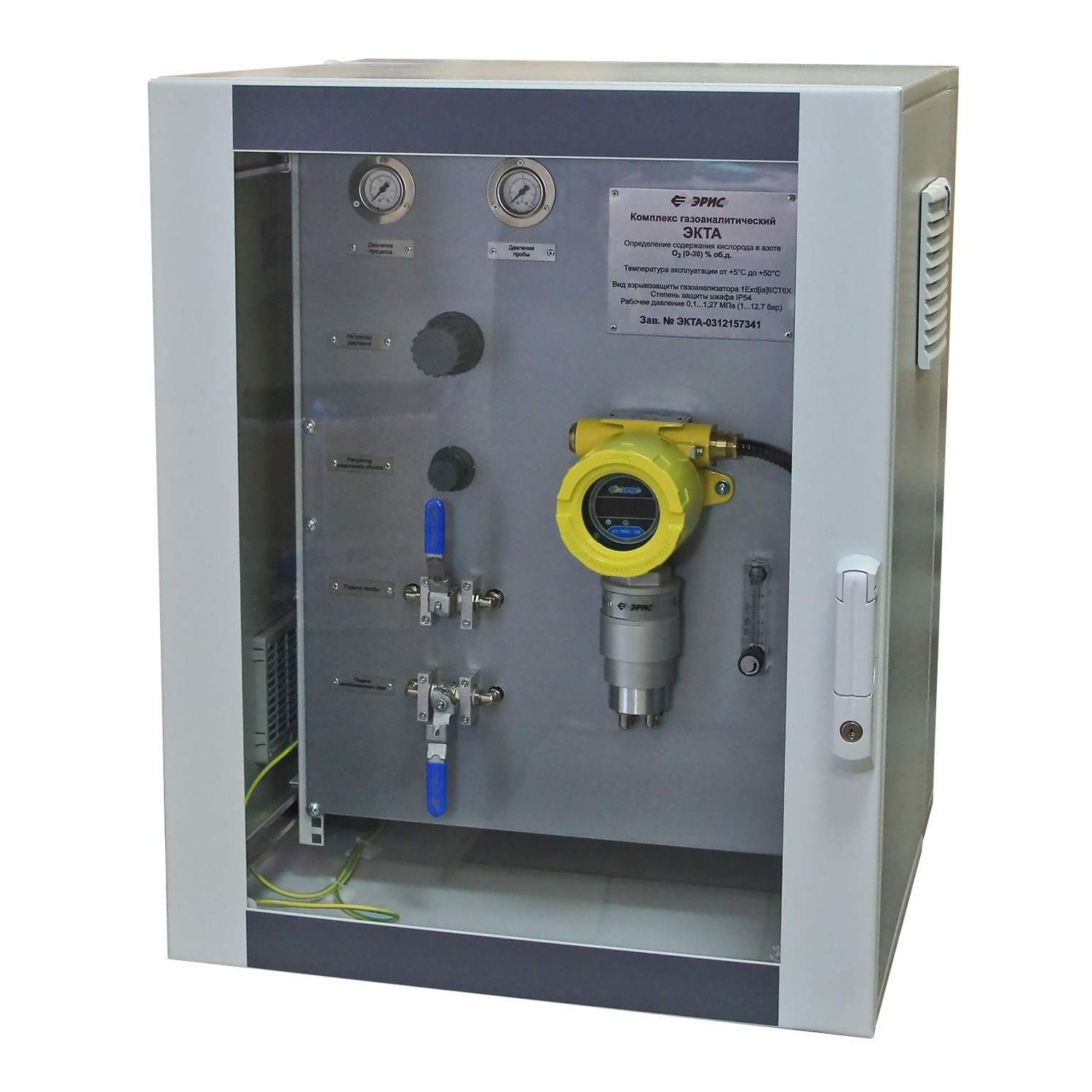EKTA

EKTA is automatic fixed system of continuous action and performs the following functions (depending on the performance and availability of optional accessories):
- continuous measurement of the concentration of flammable gases and vapors in the gas processing environments;
- continuous measurement of the concentration of harmful substances and volatile organic compounds (VOC) in the process gas environments;
- continuous measurement of the oxygen concentration, including low concentrations in process gas atmospheres;
- issuing signals when the maximum permissible values of combustible gases and vapors concentrations;
- issuing signals when the maximum permissible values of concentrations of harmful toxic substances and oxygen;
- control (on / off) actuators, process equipment control object;
- alert staff of an emergency;
- storing information about the concentration of the measured component, its processing and display;
- transmission of information on the PC, and the top-level controllers.
Main specifications:
not more than 5 dm3 / minParameter | Description |
| The list of controlled gases, vapors, VOC's |
Flammable gases and vapors:
Toxic gases:
|
Maximum pressure of the medium | up to 16 MPa |
The gas flow for analysis: | |
Mounting | Indoors or outdoors (including in hazardous areas) |
Process connection | Defined by project |
Supply voltage, power consumption, max | 220 VCD, 2500 W |
Weight | 250 kg |
Dimensions, max | 2500х1000х800 |
| Housing design |
|
Operating conditions: | |
Ambient temperature | from -60°С to +50 °С |
Relative humidity | up to 98% at a temperature of +35 ° C and lower non-condensing (without direct exposure to precipitation) |
Average life | 12 years |
The construction involves the installation of the following functional blocks (depending on the technical specifications):
- Sample transport unit. Used for transporting samples to the analyzer (DGS) in a constant quantitative and qualitative state.
- Sample reduction unit. It used to reduce the sample pressure to the value required for measurement.
- Sample cleaning unit. Used to clean the sample from the mechanical and aerosol inclusions. In some cases, may be used for absorption filters remove corrosive substances or substances which could compromise the analysis.
- The cooling unit. It serves to cool the hot sample to the temperature required for the measurement and discharge of condensed water.
- Air conditioner (for execution in the closet). It used for heating or cooling the air inside the cabinet. It maintains the temperature inside the cabinet at +10 ... + 20 ° C (at an ambient temperature of -60 to + 50C).
- The analyzer security module. It serves to prevent sample flow analysis on high-pressurized and / or high temperature.
- Gas analyzer DHS Eris 200 series. For measuring the concentration of substances in the sample.
- Sample ejection module. Serves for tap (into the surrounding atmosphere / a candle / refund process) after the sample analysis.
- The sample flow control unit. It serves to prevent incorrect measurements in the absence of sample flow.
- The unit of electrical connections. It serves for the electrical connection equipment.
Field of application (short list):
- air separation stations. Control of oxygen in inert environments.
- Steaming machines and containers. Control of the oxygen concentration (3-8%) in the vapor medium at the deactivation pyrophoric deposits.
- The suction line of compressors operating under discharge. Control of the oxygen content in the fuel gas in the suction lines; inert gas supply in case of excess concentrations.
- Transportation and desensitization solid combustible materials with inert gases. Control of the oxygen content.
- The use of inert gases to displace combustible gases and vapors.
- Control of the oxygen content in the columns operating under negative pressure, which draws a substance capable of forming with the oxygen in the air explosive mixtures.



